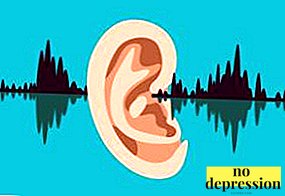Social perception is necessary to describe cognitive processes.
it human perceptionwhich life situations are connected with, people around him or occurring phenomena.
Concept

Implies figurative perception of the individual himself, surrounding people and facilities.
The definition was formulated in the late 1940s J. Bruner.
Researchers believe that the image is formed with the help of feelings and thinking. This field of science is studying the behavior between individuals with different degrees of development, but belonging to a single society.
Based on this phenomenon, are created reactions and manners, knowledge of which determines communication. The individual, thanks to his senses, not only receives information, but also processes it, making conclusions for himself.
Whole images are firmly established in the mind. They can change, ponder, but do not disappear completely, supported by feelings.
Social perception actively studied by scientists from such areas as: psychology, cybernetics, physiology. Experiments and simulation of situations are used to study this phenomenon.
Functions
There are several functions:
- Self-knowledge. A person reveals his opportunities, preferences, feelings and emotions. He finds out what is really important for him, at what moments he feels sincere joy, sadness.
- The knowledge of the interlocutor. During the conversation, the individual tries to understand another person, carefully studies his behavior, answers to questions, tries to establish contact, find a compromise, similar interests.
- Establishing contacts in the team. A person tries to find a common language at once with a group of people, gradually settles, adapts among certain people, studies their interests and life values.
- Establishing a positive atmosphere. In the course of contacts with other individuals, a positive atmosphere is created, pleasant communication. Thanks to the senses, a person receives information that pleases him, gives positive emotions.

Perception is characterized by the perception of a person himself, other people and surrounding objects.
He makes conclusions, creates stereotypes, connects thinking. Based on the data obtained, it is decided who to further contact, who aroused the greatest respect.
Mechanisms
The mechanisms are:
| Identification | The psychologist puts himself in the position of a partner in order to study his behavior, learn his attitudes, goals. It gives an opportunity to come to certain conclusions, to understand the goals of other people. |
| Empathy | Empathy, copying the emotions of your interlocutor. Only when searching for an emotional response can one understand what is happening in the soul of another person. If empathy is well developed, at the sight of a crying person you want to approach him, calm him down, show sympathy, support him emotionally, help calm down. Some individuals have a reciprocal cry. Conversely, with undeveloped empathy, a person does not know how to empathize, cannot feel himself in the place of another. |
| Attraction | The form of knowledge of the interlocutor, in which stable feelings for him are formed. They can be both positive and negative. It all depends on the behavior of the partner, his views on life, the words that he uses in the process of communication. If there is sympathy, communication continues, and the connection between people becomes strong, holding on for many years. |
| Reflection | A person tries to see himself from the outside, to imagine how those around him see. This gives rise to certain conclusions, conclusions, changes the opinion of oneself for the better or for the worse. An individual may wonder what qualities his surrounding people have bestowed upon him. But knowing oneself through the eyes of other people is very difficult, almost impossible. In order to know oneself, it is not enough to turn to other people and get their opinion; one needs to understand one's own views and preferences, and these are internal processes unknown to others, even the closest people. For this self-knowledge is connected. |
| Stereotyping | Based on the formation of stereotypes in the process of life. The individual is faced with certain life situations, which gives rise to stereotypes, "tracing paper" in the behavior of other people. But stereotypes can interfere with the establishment of new relationships, do not give to think widely, starting from the qualities of a partner. The individual thinks according to the plan prepared in his head and believes that a certain person will do so and not otherwise. Stereotypes arise from previous experience or knowledge gained from loved ones. |
| Causal attribution | Personality is endowed with qualities based on actions. This is a kind of label, based on which, there is a judgment about a person from the outside. Deeds can be negative and positive, therefore, his position in society changes as well. If a noble cause is accomplished, a positive act, it will be judged well. When committing a crime, insulting others, the opinion of such a citizen changes for the worse. |
Scientists are confident that the mechanisms also include information that the individual possesses about a certain person, object. Knowledge helps him to make decisions, to avoid erroneous judgments.
Effects

Stereotypes give rise to perception, from which effects are created:
- primacy;
- novelty;
- Halo.
Primary effect happens when meeting. The analysis of the interlocutor is formed on the information received before. To these are added the facts obtained upon acquaintance.
The individual is important, how a new acquaintance behaves, what he says, how he treats others, what qualities he has. The first acquaintance is important for creating relationships. This is the foundation for further interaction.
Novelty effect It appears only in the event that there is a new information that is of great importance.
Personality takes possession of knowledge that is important for his future actions, affect the communication with certain people. Information is both domestic and professional.
Halo Effect arises when exaggerating the qualities of the interlocutor.

These can be negative or positive qualities. No arguments man takes into account.
He is sure that he is a real master of his case or a criminal in front of him, there is no point in discussing him.
To exaggerate the qualities lead strong emotions and feelings: respect, gratitude, disgust.
Communication as perception
When contacting others for a person physical appearance matters interlocutor.
Of great importance are body type, anatomical features, gender, age.
Then counted functional featureswhich are body movements, facial expressions, gestures, voice, speech, posture. The third important point is the cultural characteristics: clothing, hair, jewelry.

If the partner is dressed inappropriate, opinion of him spoils, despite his positive personality traits.
But with close intercourse, clothing and hairstyle begin to lose their importance.
Has importance not just what the partner says, but how he does it: with or without emotions, his tone and timbre of his voice, facial expressions.
Practice shows that a smiling or laughing interlocutor gives rise to positive emotions in all others, becomes the object of sympathy. Conversely, a sad, unemotional person in the process of communication pushes away, causes antipathy.
Psychologists remind that during communication, people share not only their thoughts, opinions, but also emotions that are supported or repelled during the conversation.
Perception as a process of perception

Perception of yourself and others born in the period of development, maturation, inclusion in society
He draws conclusions based on the qualities of the interlocutor, his views and personal characteristics.
To the process of perception all senses are connected, they form the emotions, reactions and behavior of the individual.
Perception manifests itself not only in an individual, but also in a group of people. In a collective, a person perceives himself as a part of the whole, striving to achieve common ideas and tasks.
The group is aware of its integrity, cohesion, identifies certain people: leaders, lagging behind, who need more attention and time to perform certain tasks.
In a group, some people become important, while others remain invisible. This is made up of the actions of people and character traits.
In the course of perception, ideas about yourself and partners are created, their features are revealed, traits, preferences, interests.
This makes it possible to actively interact with others, to establish communication, to avoid conflicts and to find a compromise in any situation. This process begins in childhood and continues throughout life.

From an early age the person gets into the society and learns to be an integral part of it, in which perception helps.
It is accompanied by emotional evaluation, analysis of occurring events.
An adult most often thinks about what happened, trying to understand the causes of other people's actions, their motives and attitudes.
Based on the events the individual is imbued with respect, sympathy for another, or is disgusted.
Social perception is a multivalued phenomenon, which includes many aspects, features that affect a person and his socialization.
is he changing every dayinteracting with other individuals. This leads to inner development, a change in attitudes towards life.
The complexities of social perception:



